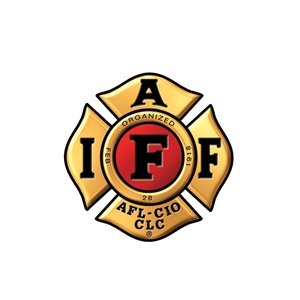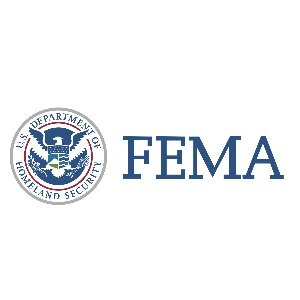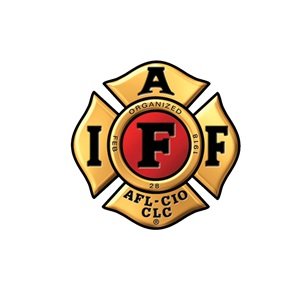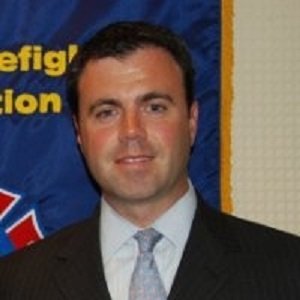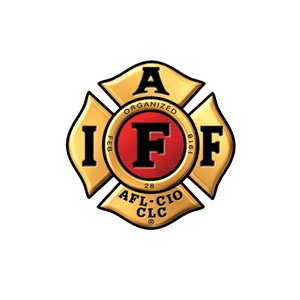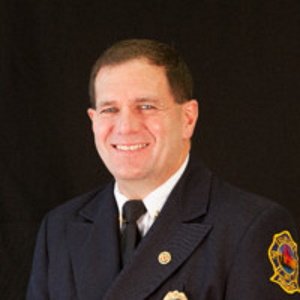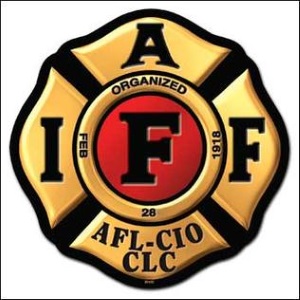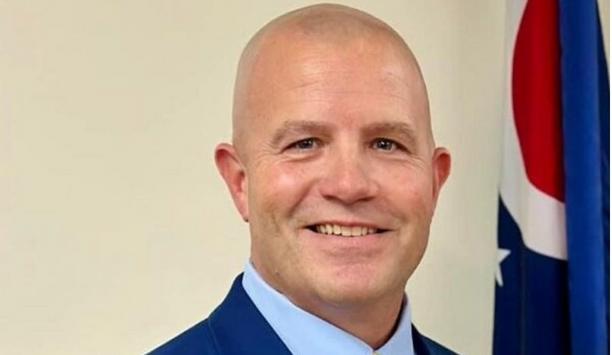International Association of Fire Fighters (IAFF) - Experts & Thought Leaders
Latest International Association of Fire Fighters (IAFF) news & announcements
Idaho Falls - The Professional Fire Fighters Association Local 1565 will continue their long-standing tradition of collecting critical funds for the Muscular Dystrophy Association (MDA) through the Fill the Boot campaign this weekend. critical funds for MDA Idaho Falls firefighters will be at the intersection of Hitt Road and 17th Street on Friday and Saturday, May 10 and May 11, 2024, from 9 a.m. to 5 p.m. They will ask pedestrians, drivers, and others to donate to the MDA, which raises funds for kids, adults, and families fighting muscular diseases. Drivers are urged to slow down, use caution, and be engaged and focused while driving to keep firefighters and motorists safe. Local 1565 firefighters Break collections record in Idaho Individuals and local businesses can support this program by dropping cash Local 1565 firefighters broke the records for collections in Idaho year-over-year, collecting over US$ 156,000 in the last three years. They want to keep the momentum going by breaking last year’s record of US$ 54,054.88. Individuals and local businesses can support this program by dropping cash and change in firefighter boots at the intersection over the weekend or by donating online. Fill the Boot fundraising events In April, the MDA, in partnership with the International Association of Fire Fighters (IAFF) kicked off more than 2,000 Fill the Boot fundraising events for 2024. The partnership started in 1954 when IAFF signed a proclamation designating MDA its charity of choice and vowing to continue raising awareness and funds until cures are found, according to the MDA website.
Fairdale High School in Fairdale, KY is making waves by training the next cohort of fire fighters and EMTs. During a recent ceremony held at the school, Dan Shirley, an instructor at the school’s Fire and EMS Academy, announced the acquisition of the school’s new Candidate Physical Ability Test (CPAT) license allowing students to undergo testing before graduation. Providing significant advantage “The CPAT is crucial for students aspiring to pursue a career in the fire service,” said Shirley. “Having the opportunity to prepare for the test from the moment they enter the program until their senior year provides them with a significant advantage.” Shirley says the 34-year-old school has seen significant success International Association of Fire Fighters (IAFF) CPAT Coordinator Bill Bussing said the school is the first high school in the U.S. to receive the license. Shirley says the 34-year-old school has seen significant success, with all three students who recently took the CPAT test passing the exam. On average, the academy graduates 20 students annually. “The need for fire fighters and EMTs to join the workforce is at a critical stage in our local community,” said Shirley. Fire science program Natalie Taylor, President of Jefferson County, KY Local 3972, praised the program as a proactive step to help alleviate ongoing staffing issues in the fire service. “We are facing staffing shortages in Jefferson County, with many of our fire fighters, EMTS, and paramedics starting to become burnt out,” she said. “Having this CPAT program at an already established fire science program like that at Fairdale H.S. will ignite excitement and interest in our next generation of fire fighters.” Louisville Fire Chief Brian O’Neill, who previously served as an 8th District Field Service Representative and Louisville, KY Local 54 president, says he has seen a decline in qualified applicants throughout the last two decades of his career. Demand for fire fighters The demand for fire fighters is expected to grow by 4 percent between 2022 and 2032 “Initially, there were 3,000 applicants for 30 positions back then. Now, as chief, we are recruiting 40 positions and have nearly 600 applicants. However, many drop out due to several reasons, including qualification issues, reducing the pool further,” he said. “Some of the seniors that will be graduating the program this year, we will be opening up our hiring process in the late spring, and certainly that is going to help them on their resume.” According to projections by the Bureau of Labor Statistics, the demand for fire fighters is expected to grow by 4 percent between 2022 and 2032, driven by the need to replace workers who transfer to different careers or retire. Engaging diverse populations To meet this demand, O’Neill stressed the importance of engaging diverse populations and expanding fire science programs in schools. “When recruiting the next generation of fire fighters, we must engage diverse populations who may not have considered the fire service or been around it while growing up,” he said. The school received a generous donation from the Louisville Fire Department—a second fire apparatus In addition to the CPAT license, the school received a generous donation from the Louisville Fire Department—a second fire apparatus. “We donated an old pumper truck so they would have that apparatus,” said O’Neill. “It is great because you have an opportunity for these students to learn what it truly means to be a fire fighter, what it involves, what it takes physically and mentally, and how to use the equipment.” Need for sustained collaboration While initiatives like Fairdale High School’s Fire and EMS Academy are crucial for cultivating future fire fighters and EMTs, those recruiting say the need for sustained collaboration and more resources are essential to addressing long-term staffing challenges effectively. “Continuing to improve upon and develop the current programs offered through Jefferson County Public Schools through collaboration with the local IAFF Local, local fire districts, and state resources is needed if we are going to address the issue of staffing our fire service in the future,” said Taylor. “The priority should be collaboration to resolve the issues while improving the relationships amongst those who have a vested interest in the success of our Kentucky fire service.”
Heith Good, a Norwich Township Fire Department lieutenant and member of the Norwich Township, Ohio Local 1723, was sworn into office on Jan 8. With more than 26 years of experience in the fire service, Good brings both a sense of duty and commitment to his community. “It was exciting and surreal,” he said. “It’s a huge responsibility, and it’s an honor to serve our community in this role, understanding the importance of our community, staff, students, and parents, and being a voice for our school.” Fire service and educational settings Back in November, Good said he was first approached about running for office two and a half years ago, ignited by his active engagement in the community through the fire service and youth sports. “My heart is to serve the community, families, students, and staff,” he said. “If I can just be a voice of reason and understanding, that’s what I want to serve the school board with.” Good said he was first approached about running for office two and a half years ago Good credits his role as a peer support training instructor for the International Association of Fire Fighters with broadening his skills in effective communication, active listening, and the importance of community in both the fire service and educational settings. Skills in effective communication With the IAFF’s support, he was able to buy signs, flyers, and other essential materials for his campaign. “The IAFF has prepared me in that way of understanding that sometimes, what I think is right may not align with the needs of the whole group,” Good said. “It’s important to keep an open mind, listen to other people’s backgrounds and views, and maintain an open mindset.” Making significant impact As he embarks on his new role, Good hopes to use his experience and passion for wellness to spark positive change in his community, encouraging other IAFF members to use their voices. “The brothers and sisters of the IAFF are some of the most resilient and strong people I know,” he said. “If you are considering running for office, I challenge you to step up. We understand the importance of community service, yet few act. Let us engage in constructive dialogues and drive positive change. Firefighters have the potential to make a significant impact. I challenge firefighters across the U.S. and Canada to join the cause and create change.”
Insights & Opinions from thought leaders at International Association of Fire Fighters (IAFF)
Chemicals broadly labeled as PFAs provide important properties to turnout gear used by firefighters, including better resistance to heat, water, and other hazards. Unfortunately, human exposure to per- and poly-fluoroalkyl substances (PFAs) has also been linked to heightened cancer risk. Research on the concentration of PFAs The U.S. National Defense Authorization Act of 2021 directed the National Institute of Standards and Technology (NIST) to identify the prevalence and concentration of PFAs in the personal protective equipment worn by firefighters. The resulting research has identified the presence of PFAs in 20 textiles used to make the various layers of a firefighter’s turnout gear. PFAs The water- and oil-resistant properties of PFAs have made them ubiquitous components in products The water- and oil-resistant properties of PFAs have made them ubiquitous components in manufactured products, including textiles used in firefighter apparel. PFAs have found their way into the bodies of most Americans, and research has shown higher PFA concentrations in the blood among firefighters. However, there are numerous potential pathways to exposure, including fire scenes, aqueous film-forming foams, food grown at fire stations, ambient dust, as well as firefighter turnout gear. Health effects The health effects of PFA exposure are the subject of extensive ongoing research. For example, cancer incidence data are available for only a subset of known PFAs. PFAs do not break down easily and persist in the human body and the environment, thus earning the name “forever chemicals.” Further research continues what kinds and levels of PFAs are dangerous and how the chemicals find their way into the body. Presence in turnout gears PSAs potentially could be present in any one of the three layers of turnout gear, the outer shell, the moisture barrier, and the thermal liner. All three layers must conform to National Fire Protection Association (NFPA) requirements to resist heat, water, and other hazards. Research findings NIST researchers targeted 53 PFAs used to fabricate 20 textiles used in various layers of turnout gear NIST researchers targeted 53 PFAs used to fabricate 20 textiles used in various layers of turnout gear. They identified and quantified concentrations of 26 different PFAs. Researchers found the least amount of PFAs in the fabric layer closest to a firefighter’s skin, the thermal lining; water repellency is a lower priority for this layer than the other two. In contrast, the moisture barrier and the outer shell contained PFA concentrations up to 400 times higher, although the numbers varied from fabric to fabric. update turnout equipment standards Changing to a non-PFA water-repellant coating on the outer layer could essentially eliminate PFAs from that layer. Since the thermal liner already has low PFA content, that leaves only the moisture barrier layer to address. However, researchers caution about the possibility of swapping one risk for another. Information gleaned from NIST research could be used to update turnout equipment standards and give firefighters more confidence in the safety of the equipment. wear and tear Another factor to consider is the impact of wear and tear on how many PFAs escape from turnout gear. Factors include UV exposure, heat, and laundering, which have a measurable impact on PFAs in turnout gear. NIST efforts currently underway will use high-resolution mass spectrometry to identify a broader swath of PFAs than the 53 compounds already quantified, including screening for previously identified compounds as well as searching for novel PFAs. PFA exposure Future research will study fire scenes, fire stations, and other occupational environments where firefighters work in Future work will also evaluate the type and amount of PFAs released from firefighter gear textiles upon exposure to simulated sweat. Other routes to PFA exposure among firefighters are also being targeted by NIST research, including hoods, gloves, and wildland gear. Additionally, future research will study fire scenes, fire stations, and other occupational environments that firefighters' work in. Risk of cancer Firefighting is a dangerous profession, and firefighters are at higher risk of a variety of cancers compared to the general population. According to the National Institute for Occupational Safety and Health (NIOSH), cancer is a leading cause of death among firefighters. Firefighters face a 9 percent increase in cancer diagnoses, and a 14 percent increase in cancer-related deaths, compared to the general population in the U.S. Exposure to toxic combustion products How the exposure of PFAs ranks among those risks is debatable. Firefighters can be exposed to many known and suspected carcinogens through their work Firefighters can be exposed to many known and suspected carcinogens through their work. All types of fires create a mixture of toxic combustion products including liquids, gases, and particulate matter. Firefighter protective equipment containing suspected carcinogens is just part of the bigger picture. adverse health risks In August 2022, the International Association of Fire Fighters and the Metropolitan Fire Chiefs Association joined forces to alert members to the adverse health risks posed by PFAs in turnout gear, to draw attention to the need for PFAs-free turnout gear, and to recommend precautionary steps for members and departments until next-generation gear can be developed and put in use. In January 2023, the IAFF announced it had retained three nationally recognized tort law firms to assist the union in its effort to end firefighter cancer and remove PFAs from use in the fire service.
Two grant programs designed to address staffing, equipment, training, and health and safety needs of firefighters are scheduled to ‘sunset’ in 2024 unless Congress reauthorizes the grant programs, and funding for the programs will run out unless Congress endows them for another year. Legislation to extend the programs has already passed the U.S. Senate. The Staffing for Adequate Fire and Emergency Response (SAFER) grant program provides funding to hire additional personnel to maintain safe staffing levels in fire departments. The Assistance to Firefighters Grant (AFG) program pays for equipment, training and other fire department needs. Together, they ensure the readiness of 30,000 fire departments across the U.S. to respond to more than 30 million emergency calls annually. Introducing bipartisan legislation U.S. Senator Gary Peters, Chairman of the Homeland Security and Governmental Affairs Committee, introduced bipartisan legislation to reauthorize SAFER and AFG programs, and to provide funding for the United States Fire Administration (USFA). Other authors of the bipartisan legislation are Republican Senators Susan Collins of Maine and Lisa Murkowski of Alaska; and Democratic Senator Tom Carper of Delaware in addition to Democrat Peters. The bill was approved by the Senate Homeland Security Committee and then moved to the full Senate Current authorization of funding for all three programs expires in 2023. The bill was approved by the Senate Homeland Security Committee and then moved to the full Senate for consideration. The Senate approved the bill on April 20. Senate Majority Leader Chuck Schumer earlier pledged to pass the Fire Grants and Safety Act of 2023 in the Senate to save the programs. In addition to reauthorizing the programs for another year, the bill extends the sunset from 2024 to 2030. Federal grant programs The bill also extends through 2030 the underlying formula for the authorizations of appropriations for the grant programs; those amounts are calculated by adjusting the amount authorized for 2013 ($750 million) each year to account for inflation. In November 2022, Michigan Congressman Dan Kildee announced legislation in the House to renew the two federal grant programs critical to local departments. The Fire Grant and Safety Act would extend the grants until 2030. The Department of Homeland Security (DHS) Federal Emergency Management Agency (FEMA) is responsible for the implementation and administration of the grant programs through the Grant Programs Directorate. Modern pumper truck Outfitting one firefighter with protective gear and breathing apparatus can cost $12,000 “These federal grant programs have delivered millions of dollars to departments and municipalities to [provide] the equipment and staffing levels [needed] to respond to fires and countless other emergency calls as safely and efficiently as possible,” said Sam Fresina, President of the New York State Professional Firefighters Association. Fire departments often face budget shortfalls and high costs that prevent them from investing in modern equipment to combat emergencies and keep firefighters safe. For example, a modern pumper truck can cost more than $750,000. Outfitting one firefighter with protective gear and breathing apparatus can cost $12,000. Providing recruitment incentives “Volunteer and combination fire and EMS departments struggle to get the funding they need to keep the lights on, fuel the ambulance, and purchase turnout gear,” said National Volunteer Fire Council Chair Steve Hirsch. “The AFG and SAFER programs are critical to these departments because they allow them to purchase needed equipment and provide recruitment incentives to volunteers to serve their community.” Other organizations supporting reauthorization of the grant programs and extension of the ‘sunset’ include the International Association of Fire Chiefs (IAFC), the Congressional Fire Services Institute (CFSI), the National Fallen Firefighters Foundation, the International Society of Fire Service Instructors, the International Association of Fire Fighters (IAFF), and the National Fire Protection Association (NFPA).
Mental health wellness is a requirement for firefighters and emergency medical responders. Seeking to address the need is the Helping Emergency Responders Overcome (HERO) Act proposed by the International Association of Fire Fighters (IAFF). In the current 117th Congress, a bipartisan group of 31 legislators led by Rep. Ami Bera (D-Calif.) and Brian Fitzpatrick (R-Pa.) reintroduced the HERO Act into the House of Representatives. The proposal had previously been passed in the House but not in the Senate during the 116th Congress. HR1480 is vital to address the real need for increased mental health resources within the fire service. The Senate companion bill is to be reintroduced by Sen. Jackie Rosen (D-Nev.) Detecting, Treating, And Preventing Mental Health Challenges Tragic experiences on firefighters and emergency medical responders can lead to psychological injuries and even suicides “Firefighters and emergency medical responders repeatedly witness human trauma and scenes of devastation over the course of their careers,” says IAFF General President Harold Schaitberger. “The cumulative toll of tragic experiences on firefighters and emergency medical responders can lead to psychological injuries and even suicides,” he adds. “The HERO Act will help ensure emergency responders receive necessary resources to assist in detecting, treating, and preventing mental health challenges,” says Schaitberger. IAFF’s Commitment IAFF, a labor union representing paid full-time firefighters and emergency medical services personnel in the United States and Canada, has served as a leader in mental health and wellness. The HERO Act bolsters the IAFF commitment in four ways. Establishes a new grant program to train firefighters and peer counselors Directs the U.S. Centers for Disease Control and Prevention (CDC) to develop new guidance for fire departments on identifying and preventing post-traumatic stress disorder Directs the CDC to provide information to mental health professionals on the culture within fire departments and evidence-based therapies to treat psychological issues common to firefighters Creates a database to compile statistics on suicide among public safety officers Post-Traumatic Stress (PTS) Up to one-third of firefighters and emergency medical responders will demonstrate some or all of the criteria used to diagnose Post-Traumatic Stress (PTS). The rates of diagnosed PTS among firefighters and emergency medical responders vary due to inconsistencies in data collection; however, reported rates are between 16% and 37%. Peer-support behavioral health and wellness programs within fire departments will allow trained peer counselors to conduct outreach to firefighters and their families to assist with issues associated with PTS, substance abuse, and co-related conditions. Database And Guidance Establishing a specialized database to capture incidences of suicide among firefighters and other public safety officers will provide scientists information to examine PTS more fully and to understand broader mental health concerns. New guidance for departments will provide education on how to better identify and prevent PTS and co-occurring disorders in public safety officers. Meanwhile, new resources for mental health providers will promote understanding of the culture of fire departments and evidence-based therapies for common mental health issues.
The New Future For Fire Agencies
DownloadThe Eight Key Trends in Fire Detection in 2023
DownloadA Digital Platform to Improve Fire Safety Compliance and Inspections
DownloadOvercoming the Challenges of Fire Safety in the Paper Industry
DownloadCarbon Monoxide: Creeping Killer Caught In The Act
Download
